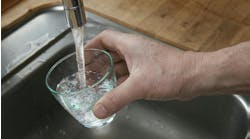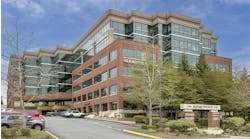Los Angeles — A Water Efficiency Requirements ordinance was passed by the Los Angeles City Council and signed into law by Mayor Antonio R. Villaraigosa this July, mandating lower low-flow plumbing requirements for plumbing fixtures installed in new buildings and retrofits, which includes all residential, commercial and industrial projects. The ordinance was introduced this March and will take effect Dec. 1, 2009.
The Water Efficiency Requirements ordinance is an addition to Article Five, Chapter 12 of the Los Angeles Municipal Code. Under the new requirements, a toilet's maximum flush volume may not exceed 1.28-gpf, urinals may not exceed 0.5-gpf, and effective Oct. 1, 2010, the requirement for urinals will be 0.125-gpf.
According to the Office of Los Angeles City Council President Eric Garcetti, the ordinance is expected to save an average of 1 billion gallons of water per year over the next 20 years.
The ordinance requires that all faucets in public restrooms be self-closing; all indoor faucets have a flow rate of 2.2 GPM, except for private or private use lavatory faucets, which have a maximum standard flow rate of 1.5 GPM; public or public use lavatory faucets have a maximum flow rate of 0.5 GPM, except for metering faucets, which will deliver no more than 0.25 gallons of water per cycle; pre-rinse spray valves in commercial kitchens do not exceed 1.6 GPM; and showerheads do not exceed 2.0 GPM.
“Not only will this ordinance save water, it will create financial savings for businesses and homeowners who make the switch to the water-efficient fixtures,” said Garcetti. “The average household that uses an ultra-low flow toilet will save an average of $90 per year, and our Department of Water and Power offers rebates for most water-efficient fixtures.”
The ordinance also requires cooling towers to operate at a minimum of 5.5 cycles of concentration, and using single-pass cooling towers for air-conditioning is prohibited in commercial, industrial or multi-family residential buildings.
All high-efficiency plumbing products will need to be listed or labeled by a listing agency, such as the International Association of Plumbing & Mechanical Officials once the ordinance takes effect.
Legislative process
Jerry Desmond Jr., the California lobbyist for Plumbing Manufacturers Institute, testified at both committee hearings and the Los Angeles city council meeting.
“PMI is cautious that the December 2009 timeframe set forth in the ordinance is aggressive, and we as the association of plumbing manufacturers are not able to provide assurances that there will be an ample supply of effective and affordable product in the timeframe set up by the ordinance,” said Desmond. “However, PMI will be working together with the city of L.A. and LADWP as the ordinance is implemented to address any issues that arise.”
The Piping Industry Progress and Education Trust Fund, a labor management cooperation committee that represents 14 plumbers and pipefitters local unions and more than 500 union contractors, supports the water efficiency requirements, noting, in a letter, that the water efficiency ordinance will save water and energy while sustaining and creating new jobs.
The Plumbing-Heating-Cooling Contractors of California also supports the use of HETs, 1.28-gpf and ULF toilets, according to Jerry Hotarek, president of the California PHCC.
The Water Efficiency Requirements were created to support and complement Los Angeles' Green Building Program, which went into law April 22, 2008, establishing a series of incentives and requirements for developers to meet USGBC LEED standards.
Green building code
Not only has the city of Los Angeles made strides towards increasing water conservation, the entire state of California has recently implemented voluntary water conservation requirements, effective Aug. 1, 2009, as part of the state's new Green Building Standard Code, the first green building code in the nation.
The code, a supplement to the 2007 California Building Standards Code, is an culmination of a two-year effort by the administration, encouraging the reduction of a building's potable water use by 20% and a reduction beyond California's Energy Code.
“We do support the voluntary requirement,” said Harry Moos, executive vice president of California PHCC. “The state is moving in the direction that we would welcome, bringing together all the working groups, so that everyone has their issues addressed.”
The new code establishes methods for significant improvements in water usage for plumbing fixtures, has measures for specific household and landscape water conservation reductions, and establishes a two tiered 15% or 30% energy savings above current levels for all buildings.
“The state wants to have one green code for all cities and counties,” explained Moos. “These will be in the 2009 California Codes which are on track to take effect Jan. 1, 2011. The most notable will be the 1.28 ULF closet [toilet].”
Specific flow rates can be found in the 2008 California Green Building Standards Code, California Code of Regulations Title 24, Part 11, published by the International Codes Council, at: http://www.documents.dgs.ca.gov/bsc/2009/part11_2008_calgreen_code.pdf.

